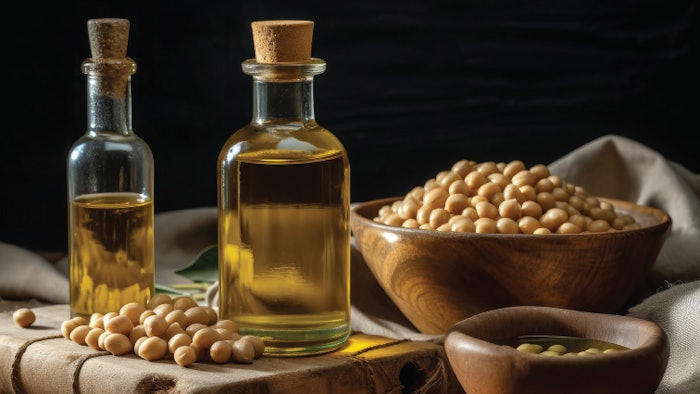
According to Chinese legend, in 2,853 B.C.E., Emperor Shennong proclaimed five critical crops to be sacred: soybeans, rice, wheat, barley and millet.1, 2 Shennong, whose name means “god farmer,” was said to be born of a princess and divine dragon. He is a deity and mythical sage healer and ruler of prehistoric China. He is believed to have taught the Chinese how to practice agriculture, the use of herbal drugs, the application of plant-based medicine and acupuncture.3
The soybean, or Glycine soya, does, in fact, originate in China and was a crucial crop – reportedly before written records began.2 Botanists believe it was first domesticated as early as 7,000 B.C.E.,4but the earliest documented evidence for the use of Glycine are the charred plant remains of wild soybean recovered from Jiahu in Henan province, China – a Neolithic (Stone Age) site occupied between 9,000 and 7,800 years ago.2
Soybean plants were domesticated as food crops between the 17th and 11th century B.C. in eastern China and were introduced into Japan, Indonesia, the Philippines, Vietnam, Thailand, Malaysia, India, etc., through sea and land trade routes. The first soybeans arrived in America in the early 1800s as ballast aboard a ship.1
Related: Collagen and Soy Peptides Stimulate Collagen
Traditional Uses
The soybean has been used in China, Japan and Korea for thousands of years as food for livestock and humans.4 It is rich in protein – approximately 38-45%; is about 20% oil;2 and also contains fat, carbohydrates, calcium, phosphorus, iron, carotene, thiamin vitamin B1, riboflavin vitamin B2, niacin, folic acid, pantothenic acids, biotin and isoflavones.5 Tofu, soy milk and soy sauce are among the top edible commodities made using soybeans.2
During World War II, soybeans became important in North America and Europe as substitutes for protein foods and as a source of edible oil. At that time, interestingly, the ability of the soybean (like most legumes) to fixate nitrogen gained attention from the U.S. Department of Agriculture, as this process turns atmospheric nitrogen into its more reactive compounds (nitrates, nitrites or ammonia), decreasing the need for nitrogen fertilizers and increasing yields when other crops are rotated with soy.2
In traditional medicine,4 soybeans were reported for antioxidant effects, to lower blood lipids, for anti-thrombosis and antiviral effects, to regulate glucose levels, for neuroprotective effects, and to invigorate the spleen and relieve bloating. Soybeans were said to promote urination and water balance, reduce fluid retention, detoxify the body, and broaden the “Middle Jiao” to improve digestive health.5
Today, soy products are used to: prevent or treat high cholesterol levels, menopausal symptoms such as hot flashes, osteoporosis, memory problems, high blood pressure, breast cancer, prostate cancer, heart disease, diabetes and premenstrual syndrome – although there is reportedly little scientific evidence to support many of these uses.6, 7
Continue reading about the skin benefits of soy in our July Digital Magazine...
Rachel Grabenhofer is the managing scientific editor of Cosmetics & Toiletries, Skin Inc.’s sister brand for cosmetic chemists. She’s a member of the Skin Microbiome Council and Society of Cosmetic Chemists, and for several years, led judging panels to honor the best ingredients in cosmetics.











